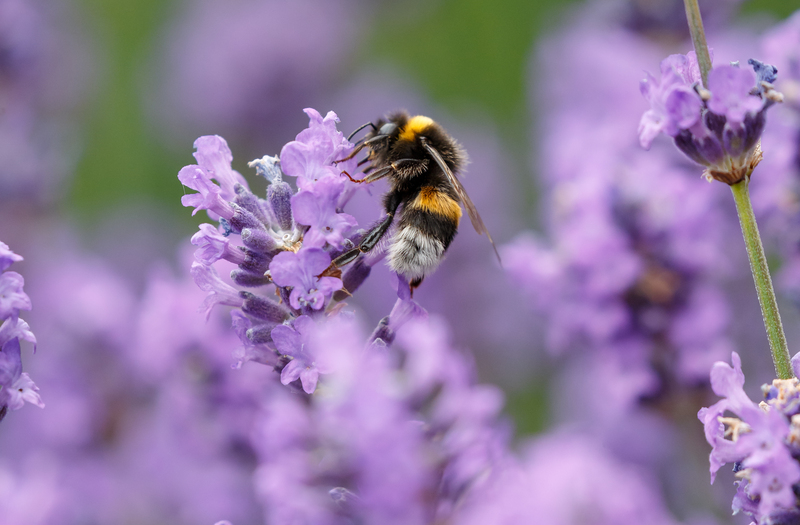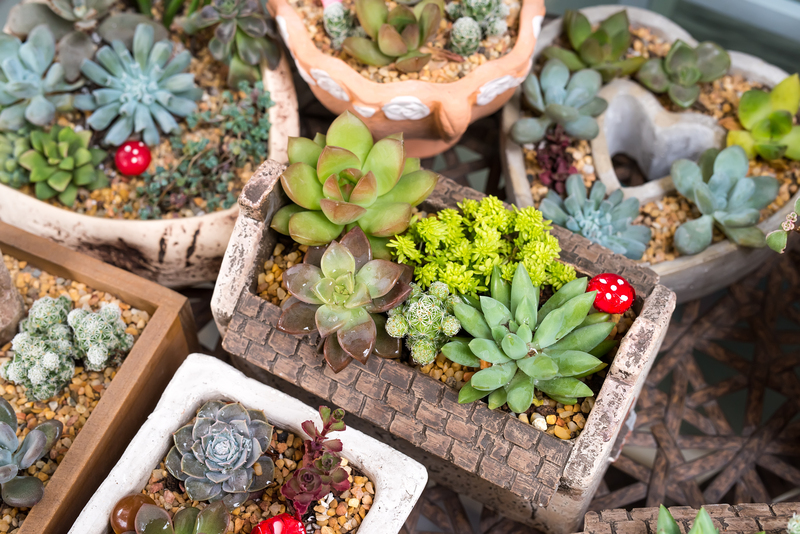Mastering the Basics of Container Gardening
Posted on 02/06/2025
Mastering the Basics of Container Gardening
Container gardening is an art and science that brings vibrancy, beauty, and fresh produce right to your doorstep. Perfect for urban dwellers, beginners, and seasoned horticulturists alike, container gardening allows you to maximize small spaces and personalize your green oasis. If you want to transform balconies, patios, decks, or windowsills with lush plants, this comprehensive guide will help you master the basics of container gardening.
What is Container Gardening?
Container gardening, sometimes called pot gardening or balcony gardening, is the practice of growing plants exclusively in containers rather than planting them in the ground. These containers can be pots, hanging baskets, tubs, troughs, or even recycled materials. The flexibility, accessibility, and creative possibilities make this gardening approach highly attractive for gardeners of all skill levels.

Why Choose Container Gardening?
- Space Efficiency: Container gardening is ideal for those with limited outdoor space, making urban gardening a reality.
- Flexibility: Containers can be moved according to sunlight, season, or aesthetic needs.
- Mobility: Easily shift or rearrange your garden to accommodate weather changes or design preferences.
- Disease and Pest Control: Growing in containers minimizes soil-borne diseases and simplifies pest management.
- Accessibility: No need to bend or kneel excessively--perfect for individuals with mobility issues.
- Year-Round Growth: With the ability to move plants indoors or to sheltered areas, you can enjoy more extended growing seasons.
Choosing the Right Container
A key element in successful container gardening is picking the right container for your plants. The choice affects root space, drainage, mobility, and overall plant health.
Container Materials
- Terracotta: Classic and breathable, but dries out quickly. Ideal for drought-tolerant plants.
- Plastic: Lightweight, less expensive, excellent water retention; may heat up in sun.
- Ceramic: Attractive and durable but heavier and usually without drainage holes--ensure proper drainage.
- Wood: Natural look and good insulation; needs to be rot-resistant or treated for longevity.
- Metal: Trendy and strong but can cause soils to overheat in sunny spots.
- Recycled Containers: Old buckets, crates, or baskets can be upcycled; just add drainage holes!
Size and Drainage
The size of the container matters significantly. Small pots dry out more quickly and restrict root growth, while larger planters hold moisture and provide ample room for root development.
- Choose a container 2 inches larger than the plant's root ball for best results.
- Always use pots with drainage holes to prevent water logging and root rot.
Selecting the Right Soil
The choice of soil is another cornerstone of container gardening success. Unlike garden beds, containers require specially formulated soil for optimal water retention, drainage, and nutrient availability.
Potting Mix vs. Garden Soil
- Never use garden soil in containers--it compacts, drains poorly, and may harbor pests & diseases.
- Potting mix (or potting soil) offers aeration, lightness, and proper moisture-holding capacity.
- Add amendments such as compost, peat moss, perlite, or coconut coir to boost drainage and fertility.
Fertilizing Techniques
Containerized plants exhaust nutrients faster due to frequent watering. For flourishing growth:
- Mix a slow-release granular fertilizer into the soil at planting time.
- Supplement with liquid or water-soluble fertilizers every 2-4 weeks during the growing season.
- Choose organic fertilizers for edible plants to ensure safety and sustainability.
Top Plant Choices for Container Gardens
Nearly any plant can thrive in a container with the right care! Here are a few of the best options for mastering the fundamentals of container gardening:
Edible Plants
- Herbs: Basil, parsley, mint, chives, rosemary, and thyme flourish in pots.
- Vegetables: Tomatoes, peppers, lettuce, spinach, radishes, and dwarf carrots are great choices.
- Fruits: Strawberries, blueberries (choose acid-loving soil), and dwarf citrus trees work well.
Ornamental Plants
- Annuals: Petunias, marigolds, impatiens, begonias.
- Perennials: Hostas, lavender, coral bells.
- Shrubs & Small Trees: Dwarf boxwood, Japanese maple, hydrangea.
Succulents & Cacti
For low-maintenance containers, select strong succulents or cacti that require less frequent watering and can thrive even in sun-baked locations.
Designing Your Container Garden
Design is both an art and a science. Use these fundamental container gardening basics to create eye-catching and productive displays.
The "Thriller, Filler, Spiller" Formula
- Thriller: The tallest, eye-catching plant in the center or background (such as ornamental grass or dwarf tomato).
- Filler: Bushy or mound-forming plants that add bulk and texture (geraniums, parsley).
- Spiller: Trailing plants that cascade over the container's edge (sweet potato vine, thyme, lobelia).
Color and Texture
- Combine plants with varied foliage:
- Glossy vs. matte
- Large leaves vs. fine textures
- Coordinate or contrast flower and foliage colors for visual appeal.
- Group containers in odd numbers for a balanced, professional look.
Essential Practices for Thriving Container Gardens
Watering Techniques
Proper watering is the cornerstone of successful pot gardening. Container plants dry out much quicker than ground-planted varieties.
- Water when the top inch of soil feels dry--frequency varies with climate, plant size, and container material.
- Deep, thorough watering is more effective than shallow, frequent sips.
- Morning is the best time to water--reduces evaporation and prevents mildew.
- Use self-watering containers or watering globes to assist during busy weeks or vacations.
Light Requirements
- Assess your location: Determine how much sunlight your containers will receive daily.
- Full sun plants need 6+ hours of direct light; choose shade tolerant plants for north-facing balconies.
- Rotate containers weekly to promote even growth.
Pruning, Deadheading, and Maintenance
- Regular pruning encourages bushier growth and healthy flowering or fruiting.
- Deadhead spent blooms to promote continued flowering.
- Check plants weekly for pests and diseases; remove leaves and debris to keep containers tidy.
Overcoming Common Challenges in Container Gardening
Every new gardener faces obstacles. Here are some common problems, along with actionable solutions for container garden mastery:
- Root Bound Plants: If roots circle the pot or grow out the drainage hole, repot into a larger container.
- Wilting or Yellowing: Usually a sign of over-watering, under-watering, or poor drainage. Check soil moisture and adjust accordingly.
- Pests and Diseases: Treat with organic insecticidal soap or neem oil for minor infestations.
- Leggy or Pale Plants: Usually due to insufficient sunlight--move pots to a brighter spot or supplement with grow lights.
- Cracked Pots in Winter: Use frost-resistant pots outdoors or bring containers inside during freezing temperatures.
Seasonal Care for Container Gardens
Year-round container garden care is possible with seasonal adjustments.
- Spring: Refresh soil, divide perennials, and fertilize for robust spring growth.
- Summer: Check soil moisture frequently; shade sensitive plants during heatwaves.
- Autumn: Remove fading annuals, reduce fertilizing, and prepare containers for overwintering.
- Winter: Bring delicate pots indoors or wrap containers to prevent freezing and cracking.
Tips for Eco-Friendly Container Gardening
Mastering the basics of eco-friendly pot gardening helps conserve resources and support a healthier environment:
- Reuse and upcycle containers whenever possible.
- Harvest rainwater for irrigating your plants.
- Use organic, peat-free potting soils and fertilizers.
- Plant pollinator-friendly flowers for bees and butterflies.
Creative Ideas to Elevate Your Container Garden
- Vertical Gardens: Stack pots or use a trellis to maximize vertical growing space.
- Themed Containers: Create an herb, salad, or sensory garden in a single container.
- Mobility: Place containers on wheeled plant caddies for easy rearrangement and cleaning.
- Water Features: Add a small fountain or water garden container for extra tranquility.

Frequently Asked Questions (FAQs)
Do container plants need special care?
Yes, container-grown plants have unique needs, especially regarding watering and fertilizing. Closely monitor moisture and nutrient levels for thriving container gardens.
Can I grow vegetables in pots?
Absolutely! Many vegetables, such as tomatoes, peppers, leafy greens, and root crops, are ideally suited to container gardening.
How often should I repot plants?
Repot annually or when plants outgrow their current containers. Most fast-growing annuals only require fresh potting mix each season.
What is the best fertilizer for container gardens?
Use a balanced slow-release fertilizer at planting, and support growth with liquid fertilizers every few weeks. Choose organic options for edible plants.
Conclusion: Your Green Thumb Awaits
Mastering the basics of container gardening opens the door to a world of creative growing, whether you dream of fresh kitchen herbs, dazzling flowers, or bountiful veggies. By understanding plant needs, selecting the right containers and soils, and using thoughtful care practices, you'll enjoy a thriving container garden--no matter your space or experience level.
Ready to transform your porch or balcony? Start your container garden today and experience the joy of growing, tending, and harvesting right outside your door!

